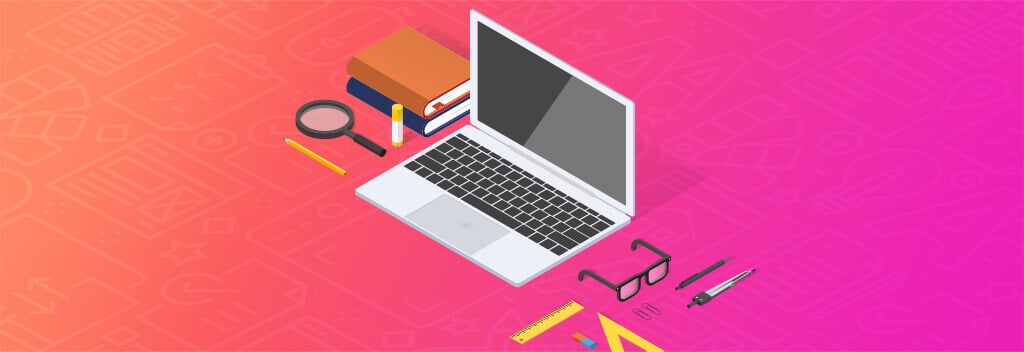Chief Marketing Officers, VPs, and Marketing Directors really know their stuff when it comes to B2B marketing, strategy, and getting results. However, embarking on a new B2B web design project can be a totally different animal.
Unless you work for a web design agency, you likely only work on a new website design and launch every 3 – 4 years or so and it can be tough to familiarize yourself with the process since so much time and activity elapses in between.
In this article, we share the essentials of a B2B web design for CMOs and marketing teams getting ready for a new website. Whether it’s been a while since your last website project or you’ve never been at the helm for a redesign, this will be a quick intro to help you prepare.
Basic Web Design Elements & Terms
Before you embark on a B2B website redesign, it’s helpful to brush up on a few terms. Familiarizing yourself with these basic terms enable you to dive right into the project.
- Calls-to-Action (CTAs) – In a website design, a CTA instructs the visitor on the next action they should take, whether that is to complete a contact form, download a guide, call the business, or sign up for a newsletter.
- Font – This refers to the style of text.
- Header Tags – These are referred to in the context of search engine optimization (SEO) and is the tag in the HTML. For example, an H1 tag (Heading 1) is the main title of the page or the blog post. The subsequent tags (H2, H3, H4, etc) refer to the sub-heads below the H1.
- JPEG – Identifies a type of image file that uses compression to minimize the size of the image file without sacrificing quality.
- Navigation – Also called website navigation or site navigation, it’s the main menu of a B2B website.
- Pixel – This is the smallest area of illumination on a computer, tablet, or phone screen. Images are made up of many pixels, so this often refers to the size of the image.
- Sitemap – Acts as the blueprint for the website and shows the overall architecture of the website’s navigation and any sub-pages.
See more B2B web design terms here: https://www.bopdesign.com/bop-blog/2017/05/11-essential-web-design-terms/
Tips to Prep for a Web Design Project
Once you identify that your company needs a new B2B website, what’s next? You don’t need to do a ton of pre-work before you start contacting web design agencies, but there are a few things that will streamline the creative and design process. A few things you can do to prepare for the website design project include:
- Determine objectives and goals – Even if this is a short list of what you want to get out of a new website and how you expect to use the website, that’s helpful. With this information, you can evaluate agencies on how they respond to your needs in these areas. Read more about how to determine your B2B website objectives.
- Write out your list of must-haves and nice-to-haves. Are there specific features and functionality you’d like to see? Is there a specific problem with the current site that you need to be addressed with the new site? Did you see something cool on another website and would love to see it on your site? Compile this list and share it with your B2B web design agency.
- Determine your content needs. Do a quick content audit of your website and assess whether the content is accurate, needs some tweaking, or needs a complete overhaul. If it needs to be rewritten, do you have an in-house writer who can take on the project or will you need the agency to provide copywriting services? Content is often an afterthought in many website redesigns, but also can take the longest to develop. Understand your needs in the beginning so you can plan and scope accordingly.
- Assemble your team – Many of the delays during website projects come from a lack of resources and availability of team members. While it may be challenging for team members to add a website project on top of their other responsibilities, identifying roles and responsibilities at the outset will help save time in the long run. By getting buy-in from your team before a project and making sure they know of their involvement and expectations, you can help build in time for reasonable turnaround times.
- Gather any assets or gain the proper access to assets – Any web designer you work with will need access to digital files for things like logos, company photos, brand guides, sales presentations/brochures, industry logos, white papers, case studies, etc. If you know for sure that you plan on incorporating certain elements, try to gather the assets in one spot or identify who has access to the assets and notify them that you’ll be needing them very soon. Doing this will save you time once you start the website project.
- Prepare stakeholders and get buy-in – It’s essential that you have the internal approval and leadership support for a B2B website design project. Creating a professional, branded digital presence is quite an undertaking and won’t succeed if you don’t have internal support – particularly for the leadership team.
Check out a CEO’s guide to a website project for more tips for your leadership team.
Setting Expectations for a B2B Web Design Project
As you set out on the path to building a new B2B website, it’s important to set proper expectations. If you are looking to hit a target date to meet a business objective, make sure you share that date with your agency and build in a reasonable amount of time to design and develop the website.
For a professionally designed and developed custom website, the average timeline at Bop Design is 16 – 24 weeks from start to launch (assuming feedback and assets are received in a timely manner). For larger websites or intensive custom elements, this can be longer.
When setting expectations for your leadership team, sales team, and your own team, think about the following:
- Timelines – Do you have a large industry expo coming up? Are you looking to build credibility in advance of an IPO? Does your sales team need an additional source of leads to hit revenue goals by the end of the year? If you are trying to launch a new website for a particular event or to meet a goal, make sure you have enough time. If the expo is next month, are you willing to sacrifice customization, functionality, and spend more to meet that deadline? Or are you able to reset your target launch date to get what you really need from the website?
- Design – How complicated is your desired design? For example, if you need help with refreshing your brand and your company logo, build that into the timeline. Branding refreshes and new logo designs can take quite a bit of time (and with good reason – they are critical and represent who your company is). Do you have the final call on the overall design of the website? If so, that will streamline the process. If there is a committee or multiple stakeholders, be sure to consider the time it will take for the committee to provide feedback and approvals.
- Copy – The copywriting phase of a B2B web design project can vary widely from ground-up copywriting to small tweaks on existing copy. For most web design projects, the client provides rough content and the design agency interviews your subject matter experts to bridge the gaps with the final product being new, custom, professionally written copy.
- Development – This process includes the actual coding, testing, and tweaking of the website once the final design has been approved. Development cannot take place until the design is finalized. Yes, things can be tweaked and updated after the website is developed, but in the interest of streamlining the process, a design layout should be final before a web developer writes the first line of code. Many marketers don’t understand how long the development process takes – because they aren’t developers! Just like if you’ve never baked a cake – you don’t know everything that goes into it. If you’d like to know a little bit more about what goes into website development, read our brief overview: https://www.bopdesign.com/bop-blog/2018/04/overview-of-b2b-website-development/
- Launch – A new B2B web design launch is an exciting time, but timing is critical to a successful launch. We recommend launching a website quietly (in order to work out any bugs post-launch) and then announce it after a few days or weeks. It’s also important to ensure the timing of the launch won’t disrupt any business activities. Consider how your employees and customers use your current website. Would it disrupt business if they weren’t able to access their login account for a few hours?
There you have it, a quick intro to help you prepare for your upcoming B2B website design project.



